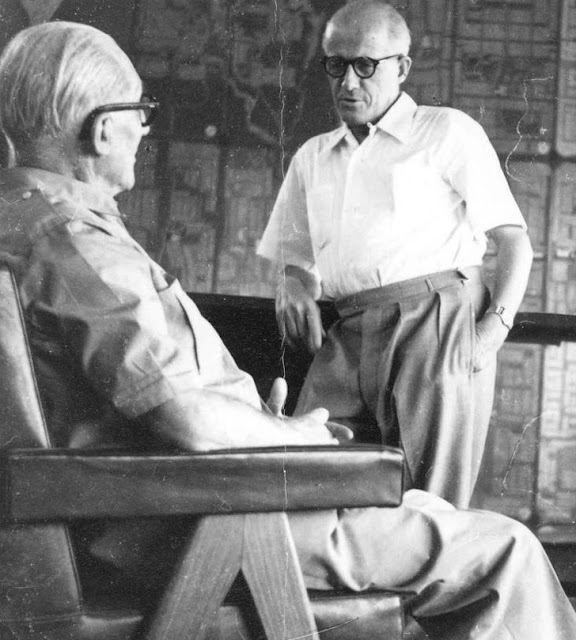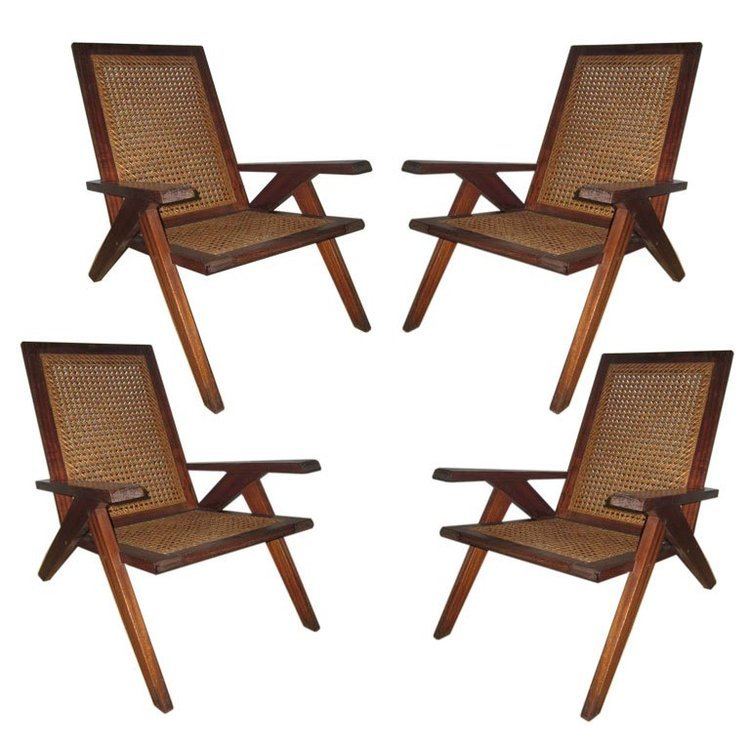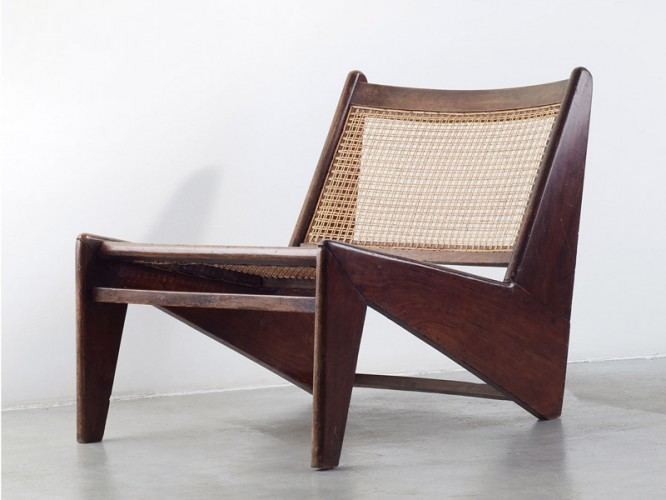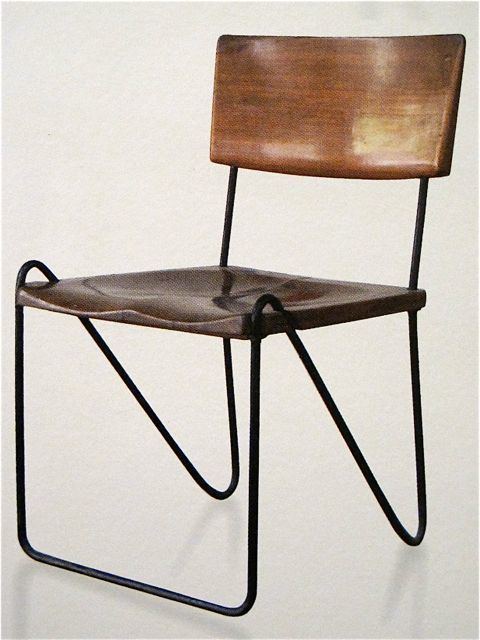Occupation Architect Name Pierre Jeanneret | Role Architect | |
 | ||
Books Urbanisme, Algiers, and Other Buildings and Projects, 1930-1933 Structures Villa Savoye, Villa Jeanneret | ||
Jean prouv pierre jeanneret
Pierre Jeanneret (22 March 1896 – 4 December 1967) was a Swiss architect who collaborated with his cousin, Charles Edouard Jeanneret (who assumed the pseudonym Le Corbusier), for about twenty years.
Contents
- Jean prouv pierre jeanneret
- Charlotte perriand pierre jeanneret inside refuge tonneau
- Early life
- Career
- Chandigarh
- Furniture
- Death
- References

Charlotte perriand pierre jeanneret inside refuge tonneau
Early life

Arnold Andre Pierre Jeanneret-Gris was born in Geneva. He grew up in the typical Jura landscape that influenced his early childhood and his Geneva Calvinism roots. He attended the School of Fine Arts (Ecole des Beaux-Arts, Geneva). As a young student, he was a brilliant painter, artist and architect, greatly influenced by Charles Edouard Jeanneret (Le Corbusier), his cousin and mentor for life. He was a cyclist in the Swiss Army from 1916 to 1918.
Career
In 1922, the Jeanneret cousins set up an architectural practice together. They designed many buildings, including a number of villas and vacation houses, and renovated existing buildings as well.

Their working relationship ended when Pierre joined the French Resistance and Le Corbusier did not. However, they collaborated once again after the War, on the plan and architecture for the city of Chandigarh in India.
Chandigarh

Jeanneret, in collaboration with the English husband-wife team of Maxwell Fry and Jane Drew, was responsible for much of Chandigarh's large civic architecture project. His most remarkable contribution has undoubtedly been the designing of the fourteen categories of mass-housings that constitute the living and amenity areas of Chandigarh. Jeanneret, along with Ar. Jugal Kishore Chowdhary, Ar. Bhanu Pratap Mathur and Er. Agya Ram, was responsible for a significant amount of designing for the Panjab University, including the Gandhi Bhawan and the University Library.
Jeanneret stayed on in Chandigarh after its construction, advising the local government in his appointed capacity as Chief Architect of the city. In order to commemorate his legacy, the Chandigarh Administration has restored his residence, House No. 57, Sector 5 (Type 4J), and converted it into a Museum dedicated to his contributions to the city, on his 121st Birth Anniversary i.e. March 22, 2017.
Some of his major works in Chandigarh include the M.L.A. Hostels in Sector 3 and 4, Polytechnic for Men (now CCET) in Sector 26, the State Library, Town Hall and the Post & Telegraph Building in Sector 17, the Architects' Office (now Le Corbusier Centre) in Sector 19, the P.G.I.M.E.R. in Sector 12 (in collaboration with Jeet Malhotra, Aditya Prakash and H.S.Chopra) and the Shops on V4 in Sector 11.
Furniture
As well as buildings, Jeanneret also designed furniture, both independently and with Le Corbusier. He experimented with minimalist design, including a chair which required no fasteners.
Death
On his death, 4 December 1967, in accordance with his will, Jeanneret's ashes were scattered in Chandigarh's Sukhna Lake.
